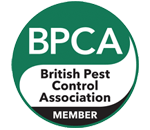Seagulls can become a significant nuisance for both residential and commercial properties, causing damage, noise, and health risks. At Total Pest Control, we provide effective seagull pest control solutions tailored to your needs. With years of experience in humane and environmentally responsible methods, our team is fully equipped to tackle seagull infestations, helping to protect your property and restore peace of mind.
Whether dealing with nesting gulls, excessive droppings, or aggressive behavior, our technicians are here to offer expert advice and seagull pest control services to resolve the issue efficiently.
What are the clear signs of Seagulls?
Although we would traditionally have found Gulls predominantly in and around our coastal areas this is no longer the case and you can quite readily find Herring Gulls, Lesser Black Backed Gulls and Black Headed Gulls much further inland. In fact, many of our calls for seagull pest control and seagull removal are coming from places over an hour from the coast.
Gulls often cause a nuisance when nesting on buildings, whether it’s a private house, hotel, warehouse, or factory. Seagull infestations can be extensive, as these birds often nest in large colonies. Once a breeding ground is established, they tend to return year after year, making professional seagull pest control essential to prevent ongoing problems.
A few signs that are associated with Gull activity that requires help can include:
Guano
The most obvious sign of a Gull problem, guano is not only unsightly it can cause damage to buildings and has health implications. We offer guano removal as part of our seagull pest control services.
Damage
Gulls can cause damage to buildings, guttering and drainage when they are building and placing their nests. Seagull exterminator solutions play a vital role in protecting properties from damage.
Attacks
Gulls are highly protective of their nests and chicks during the breeding season and can be aggressive toward humans, swooping or dive-bombing passers-by. Our seagull removal services ensure that your family and home remain safe.
There are six species of Seagulls that can be a public nuisance:
- Common Gull – Larus canus
- Black Headed Gull – Larus ridibundus
- Great Black Backed Gull – Larus Marinus
- Lesser Black Backed Gull – Larus Fuscus
- Kittiwake – Rissa tridactyla
- Herring Gull – Larus argentatus
Appearance:
- Medium to large-sized bird
- Large wing span
- Black or grey back and wings
- Depending on species they can be between 34cm to 78cm in length
- Usually found in large groups
Problems associated with Gulls
Gulls can pose significant health risks for both humans and animals, which is why professional seagull pest control by a reputable company is highly recommended. Once a seagull infestation is identified, it is crucial to bring in expert seagull removal services to prevent the following health risks from occurring:
- Building Damage – Gulls can cause significant structural issues by nesting on rooftops, ledges, and gutters, leading to costly repairs if left unmanaged. Professional pest control seagulls services can help prevent long-term damage.
- Cryptococcosis – This is a very serious illness. It begins as a lung infection but can progress to the meninges of the brain causing Meningitis
- Erysipelas – This is a serious wound infection, which may be brought about by the transmission of streptococcus pyrogenes that may enter minor wounds from the debris of birds’ environment.
- Secondary Pests – Nests can be an ideal habitat for blood-feeding parasites that can bite, such as the bird mite (Dermanyssus spp)
How to get rid of Seagulls?
Professional seagull pest control is essential should you have a seagull infestation on your property. The longer the problem is left untreated the more expensive it can be to ensure effective seagull removal.
To help you get rid of seagulls, we provide the following seagull pest control solutions:
Bird Netting
One of the most popular and effective methods used for protecting structures against Gulls. Nets are highly versatile and can be used on most parts of a building where there is a void or ledge. Learn more about why Bird Netting is a crucial part of our effective seagull removal solutions.
Ledge protection
Stainless steel post and wire systems can be fitted to ledges to make potential landing surfaces unstable, preventing gulls from settling. This discreet system is an effective seagull pest control solution, suitable for areas with light pressure and a good alternative to spikes for aesthetic purposes
Trapping
Trapping of gulls is often perceived as the most humane method of seagull removal. The birds are enticed to feed and enter open traps for a few days after which the traps are set and the birds are trapped. Our seagull pest control team then ensures they are humanely dispatched.
Culling
Culling can control bird infestations, but only if adopted on a continual basis. The preferred and most cost-effective method of culling as a seagull pest control solution is conducted by shooting.
Get In Touch Today
Is your home or business facing a pressing seagull infestation? Fear not. Our seagull pest control team can ensure quick, effective and affordable seagull removal services that eradicate them and deter them from coming back. Trust in our seagull exterminator solutions today.
Contact us for a free quotation.
Seagull FAQs
Why do I need professional seagull pest control?
Seagulls can seriously damage buildings, guttering, and roofing, while their droppings pose health risks to people and pets. Our professional seagull pest control service ensures your property is protected and prevents long-term issues caused by a seagull infestation.
Are seagull exterminator services safe and humane?
Yes, our seagull exterminator services always follow humane and environmentally responsible practices. We use methods such as trapping and deterrents to prevent harm to the birds whilst protecting your property.
Can I handle seagull problems myself?
Whilst minor issues may seem manageable, professional seagull pest control services like those offered by Total Pest Control ensure the infestation is addressed safely and effectively, and that they are less likely to return.






